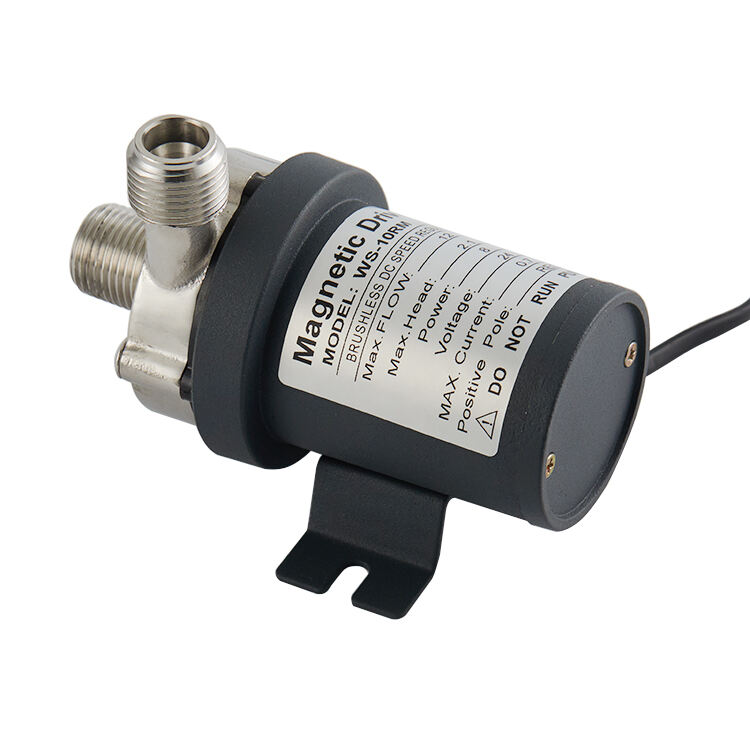Essential Guide to Troubleshooting Brewery Pump Issues
Brewing great beer requires reliable equipment, and a wort pump stands as one of the most crucial components in any brewery setup. Whether you're running a small craft operation or managing a home brewing system, understanding common wort pump issues and their solutions can save you time, money, and precious brew batches. This comprehensive guide explores the most frequent problems brewers encounter with their wort pumps and provides detailed solutions to keep your brewing process flowing smoothly.
Cavitation and Air Lock Problems
Understanding Pump Cavitation
Cavitation occurs when your wort pump creates vapor bubbles that subsequently collapse, causing damage to the pump's internal components. This common issue typically manifests through unusual noises, vibrations, and reduced pumping efficiency. The primary causes include insufficient inlet pressure, high liquid temperatures, or improper pump installation. To prevent cavitation, ensure your wort pump is positioned below the liquid level of your kettle or mash tun, creating a positive head pressure on the pump inlet.
Regular maintenance checks can help identify early signs of cavitation damage. Look for pitting on the impeller or housing, which indicates the need for immediate attention. Installing a proper check valve and maintaining appropriate fluid temperatures can significantly reduce the risk of cavitation in your wort pump system.
Addressing Air Lock Issues
Air locks in your wort pump can bring your brewing process to a complete halt. These frustrating blockages occur when air becomes trapped in the pump housing, preventing proper fluid flow. The most effective solution involves properly priming your wort pump before operation. Begin by opening all valves and allowing the system to fill naturally with liquid. Some brewers install a small valve at the highest point of the pump housing to release trapped air.
For persistent air lock problems, consider installing an automatic air release valve or implementing a more efficient pump priming procedure. Many modern wort pump designs include self-priming features, though these still require proper setup and maintenance for optimal performance.
Temperature-Related Challenges
Managing Heat Transfer Issues
Wort pumps often face challenges when handling high-temperature liquids during the brewing process. Excessive heat can lead to seal failures, reduced efficiency, and potential damage to pump components. Installing proper insulation around your wort pump and transfer lines helps maintain consistent temperatures and protects sensitive components. Additionally, selecting heat-resistant seals and gaskets appropriate for brewing temperatures ensures longer pump life and reliable operation.
Monitor your pump's temperature during operation, particularly during extended running periods. Some brewers install temperature sensors or thermal cut-off switches to prevent overheating. Regular inspection of seals and gaskets for signs of heat damage should be part of your maintenance routine.
Cooling System Integration
Proper integration of your wort pump with your cooling system is essential for temperature management. Consider installing a pre-cooling loop or heat exchanger to protect the pump when transferring hot wort. This approach not only preserves pump components but also helps maintain precise temperature control during critical brewing stages.
Modern brewing systems often incorporate automated temperature monitoring and control features, working in conjunction with the wort pump to optimize the entire process. Investing in such technology can significantly reduce temperature-related pump issues while improving overall brewing efficiency.
Maintenance and Performance Optimization
Regular Cleaning Protocols
Establishing a thorough cleaning routine for your wort pump is crucial for maintaining optimal performance and preventing contamination. After each use, flush the pump with hot water and an appropriate cleaning solution designed for brewing equipment. Pay special attention to removing protein buildup and mineral deposits that can affect pump efficiency.
Develop a detailed cleaning schedule that includes both daily maintenance and periodic deep cleaning sessions. Some brewers use clean-in-place (CIP) systems to automate this process, ensuring consistent and thorough cleaning of their wort pump and associated equipment.
Performance Monitoring and Adjustment
Regular monitoring of your wort pump's performance helps identify potential issues before they become serious problems. Keep detailed records of flow rates, pressure readings, and any unusual sounds or vibrations. This data can help you spot trends and address declining performance early.
Adjust your pump settings based on specific brewing requirements and system conditions. Many modern wort pumps feature variable speed controls, allowing for precise flow rate adjustments. Understanding and utilizing these features helps optimize your brewing process while extending pump life.
Electrical and Control System Solutions
Power Supply Management
Proper electrical setup and maintenance are essential for reliable wort pump operation. Ensure your power supply meets the pump's specifications and install appropriate circuit protection. Regular inspection of electrical connections, wiring, and control components helps prevent unexpected failures and safety issues.
Consider installing surge protection and emergency shut-off systems to protect your wort pump from electrical damage. Some brewers implement backup power systems to prevent process interruptions during critical brewing stages.
Advanced Control Implementation
Modern brewing systems benefit from sophisticated control systems that integrate wort pump operation with other process components. Automated control systems can monitor pump performance, adjust settings automatically, and alert operators to potential problems. Implementation of such systems requires careful planning and configuration but can significantly improve overall brewing efficiency and consistency.
Regular calibration and testing of control systems ensure accurate operation and optimal pump performance. Many brewers now use digital monitoring and control interfaces that provide real-time data and remote operation capabilities.
Frequently Asked Questions
How often should I service my wort pump?
Regular maintenance should be performed after each brewing session, with comprehensive servicing recommended every 3-6 months depending on usage frequency. This includes detailed inspection of seals, impellers, and electrical components, along with thorough cleaning and calibration checks.
What are the signs of a failing wort pump?
Common indicators include unusual noises, reduced flow rates, inconsistent performance, leaks around seals, and excessive vibration. If you notice any of these signs, immediate inspection and maintenance are recommended to prevent more serious issues.
Can I use my wort pump for other brewing liquids?
While wort pumps are designed primarily for handling wort, they can typically handle other brewing liquids safely. However, always ensure the pump materials are compatible with the specific liquid and follow proper cleaning procedures between different applications to prevent contamination.

